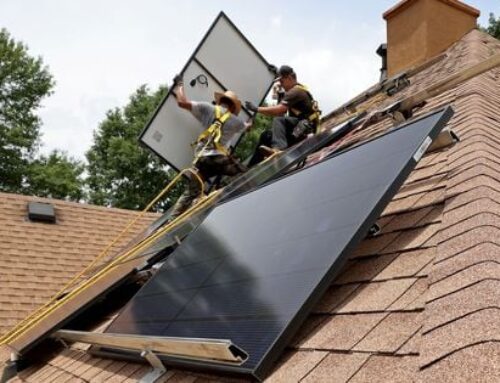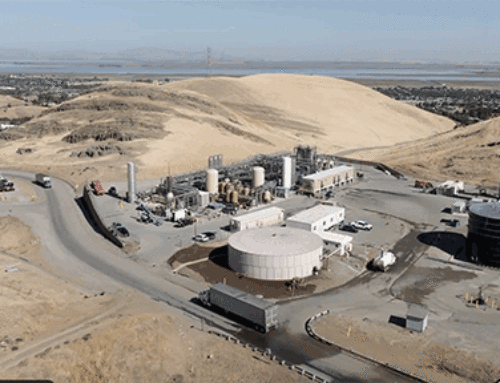Geothermal deal boosts California clean energy goals
June 25, 2024
California clean energy is ready to rock.
An advanced geothermal developer announced Tuesday it has signed a deal with one of the Golden State’s largest utilities. The agreement marks a significant step in California’s efforts to achieve 90 percent carbon free power by 2035 — propelling a carbon-free technology that can produce electricity around the clock and supplement dips in wind and solar generation.
It also underscores the rapid growth of Fervo Energy, a geothermal startup. The Houston-based company successfully completed a pilot project in Nevada last year that uses drilling techniques honed in the oil and gas industry to coax heat from the earth to make electricity. It followed up earlier this month with a proposal to supply power to two Google data centers in Nevada with a new geothermal plant in the state.
Under the terms of the agreement announced Tuesday, Fervo will supply 320 megawatts to Southern California Edison from a new geothermal power plant under development in Utah. Fervo said the deal would provide enough electricity to power 350,000 homes.
The catalyst for the deal was the California Public Utilities Commission’s passage of a midterm reliability standard in 2021, which directed the state’s utilities to buy zero-carbon resources that can generate power 24/7 to bolster the dependability of California’s power grid, said Fervo chief of staff Gabe Malek.
Southern California Edison is “interested, of course, in the clean attributes that geothermal presents, but they’re specifically interested in the reliability attributes to complement solar that’s coming on to their grid and becoming an increasing share of their portfolio,” Malek said in an interview. “That’s where we can really add value, and that’s why we see ourselves playing in California for the next decade at least.”
Advanced geothermal is increasingly viewed as a potential solution to help solve one of the energy transition’s most vexing questions: how to back up renewables like wind and solar without the emissions that come with fossil fuels. Renewable generation fluctuates with weather and time of day, meaning there is a need for clean power that can be dispatched at a moment’s notice.
But most of the options for filling those gaps face significant challenges. Nuclear facilities are expensive, difficult to permit and take years to build. Hydro faces growing questions in a climate changed world, with frequent and increasingly severe droughts limiting dams’ electricity output in arid regions like the American West. And battery storage currently faces time limitations.
The lithium-ion batteries that are increasingly popular in the power sector today can charge quickly and deliver power in bursts but generally cannot dispatch electricity for more than a handful of hours. Several companies are pioneering long duration batteries, but those efforts remain in their early phases.
Enter geothermal. The idea of making electricity from the earth’s heat is not new, but it has traditionally been limited to region’s with subsurface reservoirs of hot water. That is why geothermal accounted for less than 1 percent of U.S. power generation in 2021.
Fervo’s solution is to use horizontal drilling and fracking techniques pioneered by the oil and gas industry to crack open subterrain rock formations to release their heat. The company believes its technology will help expand the use of geothermal, making the technology a valuable tool in efforts to provide reliable electricity without planet warming emissions.
Reggie Kumar, a Southern California Edison spokesperson, said advancements in geothermal drilling techniques were creating new opportunities to use the technology.
“The agreements for 24/7 carbon-free geothermal energy will provide reliable, clean, and affordable power to help California transition to a cleaner energy future,” Kumar said.
California has long been at the forefront of national attempts to green the power grid, with efforts to encourage wind and solar development. But in recent years the state has turned its focus to zero-carbon resources that can complement renewables with emissions-free power.
In its 2021 order, the CPUC told the state’s utilities to buy 1,000 MW of long-duration storage and another 1,000 MW of clean firm resources like nuclear, hydro and geothermal. It gave utilities a deadline of 2026 — a date it later extended to 2028.
In a statement Tuesday, California Energy Commission Chair David Hochschild hailed Fervo’s agreement with Southern California Edison calling it “another milestone in California’s commitment to clean, zero-carbon electricity.”
“Enhanced geothermal systems complement our abundant wind and solar resources by providing critical base load when those sources are limited,” he said. “This is key to ensuring reliability as we continue to transition away from fossil fuels.”
Fervo is developing a 400-MW power plant in Utah that will supply the power. The plant will be built in phases, with a first 90-MW phase coming online in 2026 and the remaining portion becoming operational in 2028.
The geothermal developer so far has avoided the hurdles that have tripped up many clean energy projects. Fervo has secured access to 400 MW of existing transmission capacity that was freed up by a coal plant retirement in the region. It also has obtained permits to drill wells on federal land for the project’s first phase from the Bureau of Land Management. The company is hoping to secure permits for the rest of the project by year’s end.
Transmission constraints remain one of the biggest barriers to the technology going forward, Malek said. The company estimates it could develop another 1,500 MW at its Utah site.
“The only reason we sized it at 400 megawatts today is because that’s the transmission we currently have available to us,” he said.
The company is exploring options for securing additional transmission access, working with a transmission developer to build new lines or partnering with a data center developer to set up shop at its Utah site, Malek said.
State standards like the one passed in California that specifically target clean firm resources would aid the industry’s growth further, he said. But first, Fervo has to complete the job in Utah.
“I think there are a lot of developers, both traditional geothermal and oil and gas, actually, that are just kind of standing on the sidelines waiting to see how this project goes for Fervo,” Malek said. “If we can bring it online successfully and have an operational plant, then others will appreciate that this is fully derisked, and they will get in for the action.”
This story also appears in Energywire.
Search
RECENT PRESS RELEASES
Related Post




